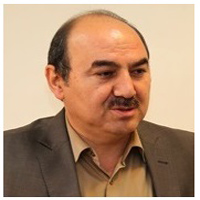Comparison of the Effectiveness of Treatment and education for autistic and related communication handicapped children (TEACCH) and Neurofeedback on the Promotion of Cognitive, Social, and Daily Living Activities in Children with Autistic Spectrum Disorders
Autism spectrum disorders are a group of disorders that the fifth edition of the diagnostic and statistical guide of mental disorders has presented it into the neuro-developmental classification which begins before the age of 3 and in a growth period and various genetic and environmental factors lead to the outbreak of this disorder. Children with autism have problems correlating with cognitive skills. Mental disability is perceived in 80% of these individuals (IQ less than 70). Other problems the individuals are dealing with are socializing and interacting with others in a meaningful and productive way in life stages and impairment in executive functions. There are different interventional methods for the treatment of autism. Two methods of treatment that have enticed the interest of researchers are the Treatment and education for autistic and related communication handicapped children (TEACH) and Neurofeedback. Parents of children with autism spectrum disorders and their educators should consider which therapeutic intervention is the most effective and appropriate one according to the status of disorder. Pursuant to the experimental and theoretical shortage in this area and considering the fact that these children are at a growing age, effectiveness plans have greatly empowered them and prevented the recurrence of their problems. Therefore, the purpose of the present study was to compare the effectiveness of the TEACH and neurofeedback method focusing on the promotion of cognitive, social skills, and daily activities in children with autism disorder.
The research method was half-experimental with pretest-posttest design with the control group. The statistical population included 7-12-year-old children with Autism spectrum, in which 45 eligible individuals and volunteers were selected random sampling and divided into two groups of intervention-educational and neurofeedback intervention and a control group of 15 individuals. Inclusion criteria were: diagnosis of autism by a psychiatrist, age 7-12 years, absence of seizure or control of it, having a moderate to high functional level by administering ASSQ questionnaire, and filling out the consent form by parents. The tools were Autism Domain Assessment Questionnaire (1999), the revised Wechsler intelligence scale (1969), TRIAD social skill assessment (2010), and the Waisman-ADL scale (2013). In addition to the center training programs, the TEACH method and neurofeedback interventions were performed individually in 20 sessions for 45 minutes and twice a week. The control group received only the routine center program. The obtained data were analyzed using SPSS 21 software and assessed T-test, chi-square test Shapiro-Wilk test, Leven's test, Lambda-Wilks test, multivariate analysis of covariance, and Bonferroni's follow-up test. All tests evaluated at the 0.05 level.
The t-test and chi-square test showed that the subjects were homogeneous in terms of age and gender (P=0.005). By using Shapiro-Wilk, Leven, and Lambda Wilks tests, the covariance test hypotheses confirmed. The results of the analysis of covariance showed that intervention methods (functional behavior analysis and neurofeedback) were effective on a linear combination of dependent variables, and there was a significant difference between the mentioned groups (p<0.001). Also, the Bonferroni's follow-up test indicated that among the groups that received training and therapy with the groups were in neurofeedback training; there was no significant difference in the variance of cognitive skills with potential and social skills with the probability and daily activities with potential. But, in all three dependent variables, there was a significant difference between the two experimental groups and a control group (p<0.001).
According to the findings of this study, it can be concluded that both TEACH and Neurofeedback treatment methods have significant effects on cognitive and social skills and daily activities in children with autism and opting appropriate therapies depends on the environmental conditions and facilities of schools and institutes as well as parents' needs.
- حق عضویت دریافتی صرف حمایت از نشریات عضو و نگهداری، تکمیل و توسعه مگیران میشود.
- پرداخت حق اشتراک و دانلود مقالات اجازه بازنشر آن در سایر رسانههای چاپی و دیجیتال را به کاربر نمیدهد.


